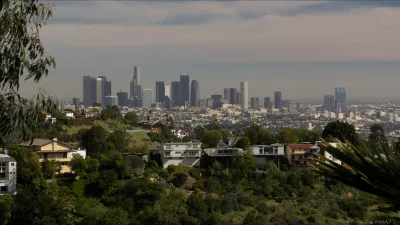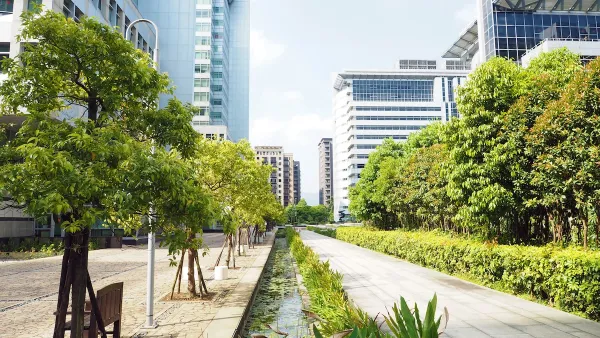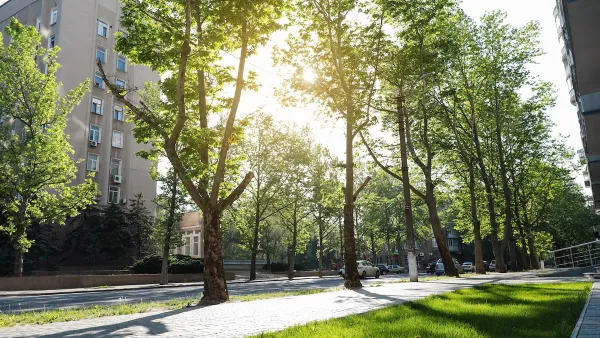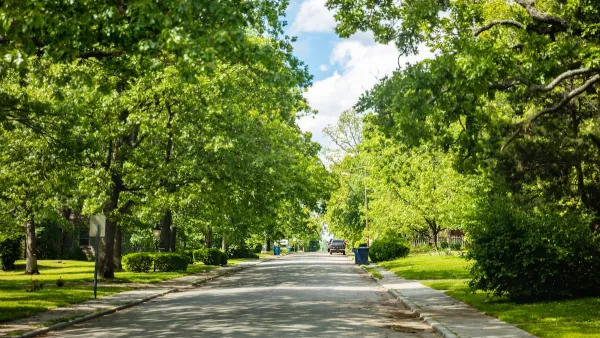Los Angeles County has inventoried their trees and devised a strategy for fostering an urban canopy. Park planner Clement Lau explains.

An urban forest is the collection of trees, plants, and vegetation found along a city’s streets, within parks, and in the built environment. Urban forest are increasingly recognized as important for a variety of functions including sequestering green house gases, filtering airborne pollutants, moderating urban temperatures—including the "heat island" effect, reducing stormwater runoff, increasing walkability, and even improving the psychological and social environment of cities.
Los Angeles County, went beyond the
. . . traditional scope of work and the boundaries of existing parks by including analyses and recommendations on urban greening and urban forestry community-wide. While we certainly wanted to increase the number and acreage of parks in these communities, we also realized that: 1) the opportunities to do so are limited given the scarcity of available land and funding; and 2) our end goal is to improve the quality of life for residents, not just to create parks. To accomplish this goal, we needed to look at the communities in their entirety and seek to make all the neighborhoods (not just the parks) greener, more attractive, more shaded, more walkable, and safer.
The County Parks Department first needed to what it already had so it
. . . applied for and received a CalFIRE grant to complete a tree inventory in all of the existing parks in the communities. Data from the inventory was used to create a database within a tool called iTrees Streets, which is a street tree management and analysis tool that uses tree inventory data to assign dollar values to energy savings, carbon monoxide reduction, air quality improvements, stormwater control, and property value increase. The tool is free and was developed by a team of researchers from the U.S. Department of Agriculture (USDA) Forest Service, Davey Tree Service, and the International Society of Arboriculture (ISA). Each of the Community Parks and Recreation Plans contains the following information about trees in County parks: species composition, age composition, estimated benefits provided by the trees in dollar value, the general condition of the trees, necessary maintenance, and potential conflicts with existing infrastructure.
The county then made this information available in its outreach efforts in the development of Community Parks and Recreation Plans for six communities identified as park poor:
Each plan contains a section addressing the urban forest, and includes strategies for enhancing the urban forest not only in the parks, but along key corridors, as part of pocket forests, and on freeway buffer sites. Although many residents were excited about the aesthetic and environmental benefits of new trees, some were also concerned about public safety and how the introduction of new trees might limit views and provide hiding spaces for illicit activity. The plans took into consideration these concerns by helping residents pick trees that would provide environmental benefits, while acknowledging public safety concerns and recommending trees with high branching patterns, minimal leaf litter, and faster growth rates. Conversations with community members and recommendations of the plans make these communities poised and ready for the expansion of their urban forests.
For more about L.A. County's urban forestry program, please see the source article.
FULL STORY: Seeing the Forest for the Trees: Planning for Parks and Urban Forests in Los Angeles County

Analysis: Cybertruck Fatality Rate Far Exceeds That of Ford Pinto
The Tesla Cybertruck was recalled seven times last year.

National Parks Layoffs Will Cause Communities to Lose Billions
Thousands of essential park workers were laid off this week, just before the busy spring break season.

Retro-silient?: America’s First “Eco-burb,” The Woodlands Turns 50
A master-planned community north of Houston offers lessons on green infrastructure and resilient design, but falls short of its founder’s lofty affordability and walkability goals.

Test News Post 1
This is a summary

Analysis: Cybertruck Fatality Rate Far Exceeds That of Ford Pinto
The Tesla Cybertruck was recalled seven times last year.

Test News Headline 46
Test for the image on the front page.
Urban Design for Planners 1: Software Tools
This six-course series explores essential urban design concepts using open source software and equips planners with the tools they need to participate fully in the urban design process.
Planning for Universal Design
Learn the tools for implementing Universal Design in planning regulations.
EMC Planning Group, Inc.
Planetizen
Planetizen
Mpact (formerly Rail~Volution)
Great Falls Development Authority, Inc.
HUDs Office of Policy Development and Research
NYU Wagner Graduate School of Public Service




























